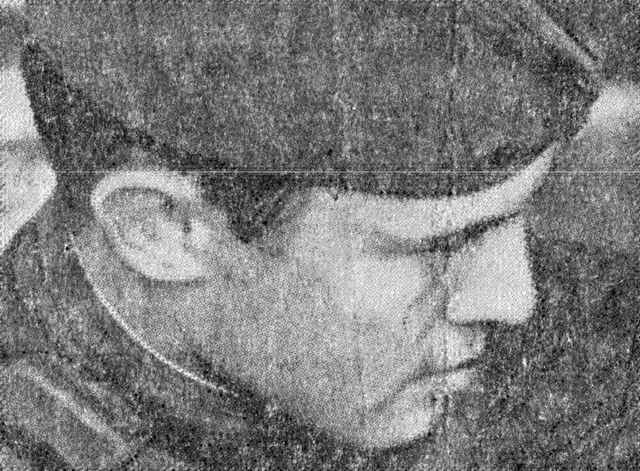用OpenCVSharp 4.5 跑一遍OpenCV官方教程
原官方教程链接:OpenCV: Periodic Noise Removing Filter
原作者有意埋了坑,完全照抄是不行的.......
using System;
using OpenCvSharp;
namespace ConsoleApp1
{
class tutorial33 : ITutorial
{
public void Run()
{
Mat imgIn = Cv2.ImRead("I:\\csharp\\images\\period_input.jpg", ImreadModes.Grayscale);
if (imgIn.Empty()) //check whether the image is loaded or not
{
Console.Write("ERROR : Image cannot be loaded..!!");
return;
}
imgIn.ConvertTo(imgIn, MatType.CV_32F);
// it needs to process even image only
Rect roi = new Rect(0, 0, imgIn.Cols & -2, imgIn.Rows & -2);
imgIn = imgIn[roi];
// PSD calculation (start)
Mat imgPSD = new Mat();
calcPSD(imgIn, out imgPSD);
//fftshift(imgPSD, out imgPSD);
Cv2.Normalize(imgPSD, imgPSD, 0, 255, NormTypes.MinMax);
// PSD calculation (stop)
//H calculation (start)
Mat H = Mat.Ones(roi.Size, MatType.CV_32F);
int r = 21;
synthesizeFilterH(ref H, new Point(143, 67), r);
synthesizeFilterH(ref H, new Point(286, 0), r);
synthesizeFilterH(ref H, new Point(0, 135), r);
Mat imgHPlusPSD = imgPSD + H * 50;
Cv2.Normalize(imgHPlusPSD, imgHPlusPSD, 0, 255, NormTypes.MinMax);
imgHPlusPSD.ConvertTo(imgHPlusPSD, MatType.CV_8U);
//H calculation (stop)
// filtering (start)
Mat imgOut = new Mat();
filter2DFreq(imgIn, out imgOut, H);
// filtering (stop)
imgOut.ConvertTo(imgOut, MatType.CV_8U);
Cv2.Normalize(imgOut, imgOut, 0, 255, NormTypes.MinMax);
Cv2.ImShow("result.jpg", imgOut);
Cv2.ImShow("filter", H);
Cv2.ImShow("PSD", imgPSD);
Cv2.WaitKey();
}
private void fftshift(Mat inputImg, out Mat outputImg)
{
Mat output = inputImg.Clone();
int cx = output.Cols / 2;
int cy = output.Rows / 2;
Mat q0 = new Mat(output, new Rect(0, 0, cx, cy));
Mat q1 = new Mat(output, new Rect(cx, 0, cx, cy));
Mat q2 = new Mat(output, new Rect(0, cy, cx, cy));
Mat q3 = new Mat(output, new Rect(cx, cy, cx, cy));
Mat tmp = new Mat();
q0.CopyTo(tmp);
q3.CopyTo(q0);
tmp.CopyTo(q3);
q1.CopyTo(tmp);
q2.CopyTo(q1);
tmp.CopyTo(q2);
outputImg = output;
}
private void filter2DFreq(Mat inputImg, out Mat outputImg, Mat H)
{
Mat m1 = inputImg.Clone();
m1.ConvertTo(m1, MatType.CV_32F);
Mat m2 = Mat.Zeros(inputImg.Size(), MatType.CV_32F);
Mat[] planes = { m1, m2 };
Mat complexI = new Mat();
Cv2.Merge(planes, complexI);
Cv2.Dft(complexI, complexI, DftFlags.Scale);
H.ConvertTo(H, MatType.CV_32F);
Mat[] planesH = { H, Mat.Zeros(H.Size(), MatType.CV_32F) };
Mat complexH = new Mat();
Cv2.Merge(planesH, complexH);
Mat complexIH = new Mat();
Cv2.MulSpectrums(complexI, complexH, complexIH, 0);
Cv2.Idft(complexIH, complexIH);
Cv2.Split(complexIH, out planes);
outputImg = planes[0];
}
private void synthesizeFilterH(ref Mat inputOutput_H, Point center, int radius)
{
Point c2 = center, c3 = center, c4 = center;
c2.Y = inputOutput_H.Rows - center.Y;
c3.X = inputOutput_H.Cols - center.X;
c4 = new Point(c3.X, c2.Y);
Cv2.Circle(inputOutput_H, (int)center.X, (int)center.Y, radius, new Scalar(0), Cv2.FILLED, LineTypes.Link8);
Cv2.Circle(inputOutput_H, (int)c2.X, (int)c2.Y, radius, new Scalar(0), Cv2.FILLED, LineTypes.Link8);
Cv2.Circle(inputOutput_H, (int)c3.X, (int)c3.Y, radius, new Scalar(0), Cv2.FILLED, LineTypes.Link8);
Cv2.Circle(inputOutput_H, (int)c4.X, (int)c4.Y, radius, new Scalar(0), Cv2.FILLED, LineTypes.Link8);
}
// Function calculates PSD(Power spectrum density) by fft with two flags
// flag = 0 means to return PSD
// flag = 1 means to return log(PSD)
private void calcPSD(Mat inputImg, out Mat outputImg, int flag=0)
{
Mat m1 = inputImg.Clone();
m1.ConvertTo(m1, MatType.CV_32F);
Mat m2 = Mat.Zeros(inputImg.Size(), MatType.CV_32F);
Mat[] planes = { m1, m2 };
Mat complexI = new Mat();
Cv2.Merge(planes, complexI);
Cv2.Dft(complexI, complexI);
Cv2.Split(complexI, out planes);
// planes[0] = Re(DFT(I)), planes[1] = Im(DFT(I))
planes[0].At<float>(0) = 0;
planes[1].At<float>(0) = 0;
// compute the PSD = sqrt(Re(DFT(I))^2 + Im(DFT(I))^2)^2
Mat imgPSD = new Mat();
Cv2.Magnitude(planes[0], planes[1], imgPSD); //imgPSD = sqrt(Power spectrum density)
Cv2.Pow(imgPSD, 2, imgPSD); //it needs ^2 in order to get PSD
outputImg = imgPSD;
// logPSD = log(1 + PSD)
if (flag > 0)
{
Mat imglogPSD;
imglogPSD = imgPSD + 1;
Cv2.Log(imglogPSD, imglogPSD);
outputImg = imglogPSD;
}
}
}
}
原图

局部放大

去除周期性噪声后结果























 1252
1252











 被折叠的 条评论
为什么被折叠?
被折叠的 条评论
为什么被折叠?








